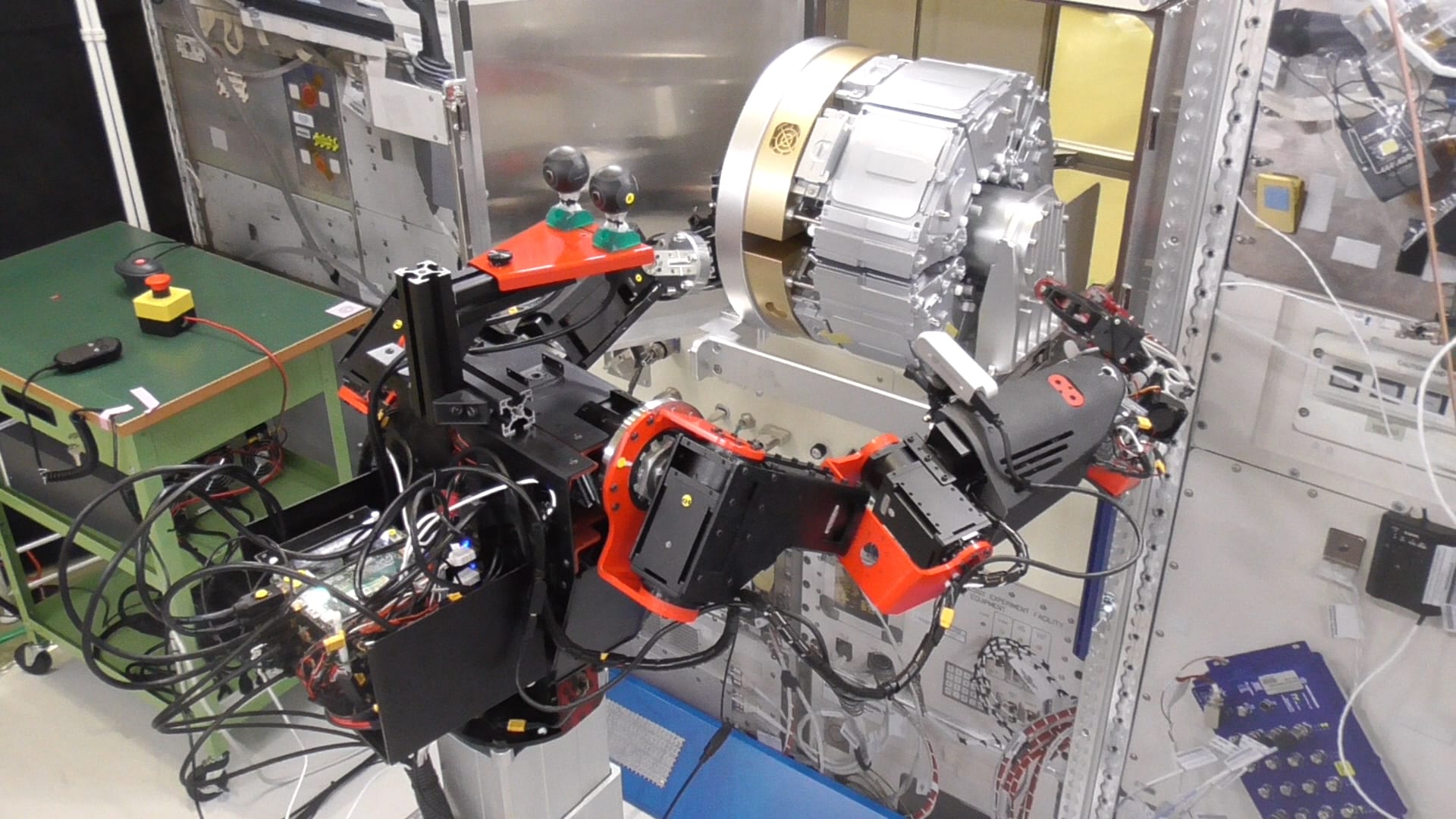With robots doing jobs everywhere from factory floors to suburban lawns, putting them to work in space was a matter of time.
For Japanese space start-up GITAI, that time is now. The company raised $4.1 million that will enable continued development of its “avatar” space robot, which it aims to have on board the International Space Station by the end of next year.
The robot combines virtual reality with other technologies and allows workers on the ground to manipulate the robot’s appendages to perform experiments and tasks. Astronauts will be freed up to handle other work.
The prototype has a 360-degree camera mounted on its head, and two arms with hands and fingers. Operators on the ground wear VR headsets and gloves to control the machine’s movements. The robot also sends haptic feedback to the gloves, giving the operator a physical sense of what the robot is handling.
- GITAI says it has developed an algorithm for compressing and transmitting the 360-degree video data that uses a fraction of the bandwidth of current technology, permitting real-time control of the machines in the ISS’s limited bandwidth environment.
- It says that it can shrink an 800Mbps video stream in 2.7K resolution down to stream over just 2.5Mbps of bandwidth. It has also developed its own low-latency communications protocol, meaning the delay between the human controller making a move and it being replicated by the robot could be as little as 100ms.
- Existing lead investors Spiral Ventures Japan and Coral Capital were joined by new investors DBJ Capital and J-Power in the funding round. The company says that it’s talking to other investors to boost it’s total investment haul to $10 million.
- GITAI employs nine people full-time. In December last year it landed a research contract with JAXA, the Japanese space agency.
- Space agencies are working with a number of companies on different robot designs and Russian rivals Skybot is scheduled to launch its F-850 robot onboard a Soyuz bound for the ISS this week
- Karma Takeaway: Though designed with space in mind, GITAI’s underlying technology could have an enormous range of terrestrial applications too, such as remote surgery or engineering. If GITAI makes the technology work well enough, it may be revolutionary.






















